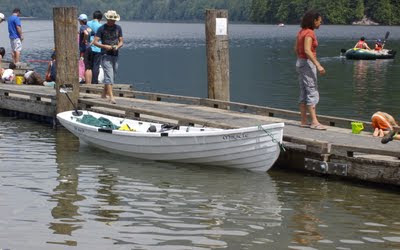I was going to give the ongoing 'front-view mirrors' thread a rest, but Peter Miller in Sydney has had such a startlingly original idea I simply can't resist. He writes:
Chris,The only drawback is the cost - 18in exterior mirrors seem to cost about £60 here in the UK, though a quick search revealed a garage mirror for £32.50. Because recreational rowers never go out in the rain, using an interior security mirror might save a bit of money too.
Hi!
I too have been experimenting with mirrors for the 17 foot Dory I row on Sydney Harbour. I tried some caravan towing mirrors on either side of a plank going across my boat but found they would often shift out of position and not be of much use. I tried a small cycling mirror attached to my cap but found it a bit small for my liking.
Then I tried a 12 inch circular acrylic convex mirror like those fixed in car parks on blind corners. I attached it near the stern of my boat and found it worked really well. But sometimes more is more so I supersized to an 18 inch diameter mirror (see pic). The result is a panoramic view of myself rowing (a plus for any narcissist rower) but also a view of most of what is around and behind me.
I still need to turn around occasionally to get my bearings but all in all it makes the rowing experience more pleasant. It also makes weaving in and out of moored yachts a breeze.
At the end of the trip I unscrew the bolt holding it to the boat and store it in the cardboard box it arrived in covered with a soft cloth to keep down the scratches.
Keep up the good work with the blog.
Kind regards
Peter Miller
Sydney Australia
UPDATE:
Chris,
FYI I bought my mirror from ebay. Being in Australia I had to pay postage but it would probably not cost to much to be sent from the US to the UK.
Regards
Peter



































